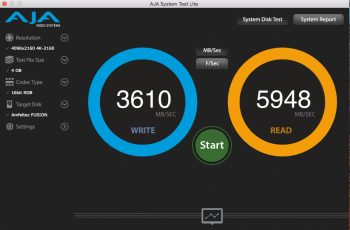Hey --
So I've read through the lengthy 4,1 to 5,1 wiki sticky and I'll admit I'm having trouble sifting through the info and finding what's relevant to me.
Basically I want to try and do one final "upgrade" to squeeze the last breath of life out of my late 2009 mac pro. I've already successfully upgraded the CPU and flashed to 5,1, and have been running OS10.10.5 for years now (it seems) and from everything I read it seems like it's possible to move up to High Sierra, but with some slight modifications to my system (namely, the system drive).
Background: I'm a composer and I will be using my machine to run Logic Pro X. It appears as though be current with High Sierra has advantages now with the latest version of Logic, hence my interest in upgrading.
So, here are my basic questions:
-Can anyone recommend an SSD that would be compatible with my machine for use as a bootable system drive? Is a SATA SSD sufficient (such as a Crucial MX500), or would I benefit from a PCIe? And which to get? I would prefer a situation the requires the least amount of firmware updating and terminal tinkering, though I do acknowledge a certain amount is probably necessary.
-Should I anticipate any other problems with OS10.13.4 in regards to any of my other hardware (i.e. memory, graphics card)?
Many MANY thanks in advance for your generous thoughts...
System specs:
Model Name: Mac Pro
Model Identifier: MacPro5,1
Processor Name: Quad-Core Intel Xeon
Processor Speed: 3.46 GHz
Number of Processors: 2
Total Number of Cores: 8
L2 Cache (per Core): 256 KB
L3 Cache (per Processor): 12 MB
Memory: 20 GB (DDR3 ECC 1066 MHz)
Processor Interconnect Speed: 6.4 GT/s
Boot ROM Version: MP51.007F.B03
SMC Version (system): 1.39f5
MC Version (processor tray): 1.39f5
Wifi:
Card Type: AirPort Extreme (0x14E4, 0x8E)
Firmware Version: Broadcom BCM43xx 1.0 (5.106.98.100.24)
ATI Radeon HD 4870:
Chipset Model: ATI Radeon HD 4870
Type: GPU
Bus: PCIe
Slot: Slot-1
PCIe Lane Width: x16
VRAM (Total): 1024 MB
Vendor: ATI (0x1002)
Device ID: 0x9440
Revision ID: 0x0000
ROM Revision: 113-B7710C-176
EFI Driver Version: 01.00.318
So I've read through the lengthy 4,1 to 5,1 wiki sticky and I'll admit I'm having trouble sifting through the info and finding what's relevant to me.
Basically I want to try and do one final "upgrade" to squeeze the last breath of life out of my late 2009 mac pro. I've already successfully upgraded the CPU and flashed to 5,1, and have been running OS10.10.5 for years now (it seems) and from everything I read it seems like it's possible to move up to High Sierra, but with some slight modifications to my system (namely, the system drive).
Background: I'm a composer and I will be using my machine to run Logic Pro X. It appears as though be current with High Sierra has advantages now with the latest version of Logic, hence my interest in upgrading.
So, here are my basic questions:
-Can anyone recommend an SSD that would be compatible with my machine for use as a bootable system drive? Is a SATA SSD sufficient (such as a Crucial MX500), or would I benefit from a PCIe? And which to get? I would prefer a situation the requires the least amount of firmware updating and terminal tinkering, though I do acknowledge a certain amount is probably necessary.
-Should I anticipate any other problems with OS10.13.4 in regards to any of my other hardware (i.e. memory, graphics card)?
Many MANY thanks in advance for your generous thoughts...
System specs:
Model Name: Mac Pro
Model Identifier: MacPro5,1
Processor Name: Quad-Core Intel Xeon
Processor Speed: 3.46 GHz
Number of Processors: 2
Total Number of Cores: 8
L2 Cache (per Core): 256 KB
L3 Cache (per Processor): 12 MB
Memory: 20 GB (DDR3 ECC 1066 MHz)
Processor Interconnect Speed: 6.4 GT/s
Boot ROM Version: MP51.007F.B03
SMC Version (system): 1.39f5
MC Version (processor tray): 1.39f5
Wifi:
Card Type: AirPort Extreme (0x14E4, 0x8E)
Firmware Version: Broadcom BCM43xx 1.0 (5.106.98.100.24)
ATI Radeon HD 4870:
Chipset Model: ATI Radeon HD 4870
Type: GPU
Bus: PCIe
Slot: Slot-1
PCIe Lane Width: x16
VRAM (Total): 1024 MB
Vendor: ATI (0x1002)
Device ID: 0x9440
Revision ID: 0x0000
ROM Revision: 113-B7710C-176
EFI Driver Version: 01.00.318


